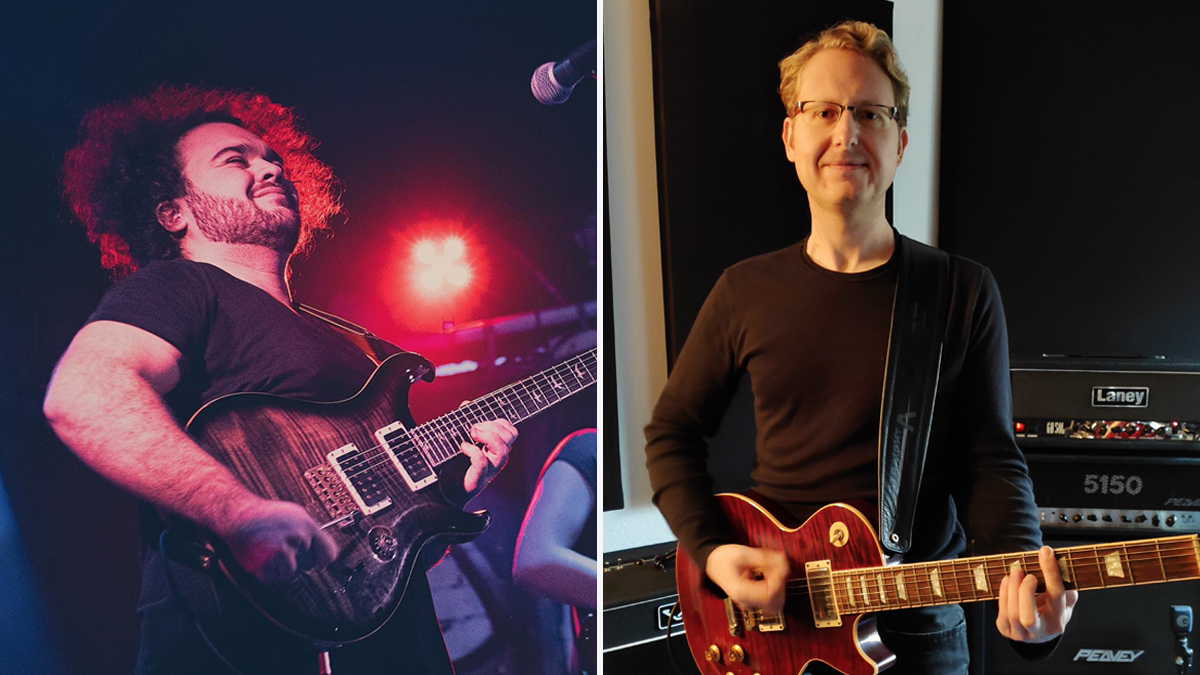
Back in December, we reported on a study published by Cambridge University Press titled Rock Guitar Virtuosos. It charts advances in electric guitar playing, as well as technology and culture, from the ‘60s to the present day.
Of course, we’re always delighted to see the wonderful world of shred being deemed worthy of academic discussion. But beyond providing a historical deep-dive into the instrument we all know and love, the study serves up some thought-provoking takeaways for contemporary creators.
“For a virtuoso, working situations have changed considerably since the last century,” reads the study’s abstract. “The aloof rock star has been replaced by the approachable virtuoso-guitarist-composer-innovator-producer-promoter-YouTuber-teacher-entrepreneur.”
As we witness everyone from Tim Henson to Manuel Gardner Fernandes to Sophie Lloyd juggle multiple disciplines while growing their careers – on social media as well as in more traditional arenas – the comment certainly chimes with our own observations from the last decade or so.
In addition, the study finds that modern virtuosos face greater scrutiny than those who went before, often being torn between opposing creative priorities: perfection vs. authenticity, innovation vs. consistency and technical ability vs. personality. Artists must balance those priorities in order to keep audiences hooked.
We met with the study's two authors, Dr. Jan-Peter Herbst and PhD student Alexander Vallejo. They aren’t your average intellectual bods – they absolutely know their way around a fretboard, too.
Herbst is a Los Angeles Music Academy alumnus and acted as Vallejo’s master’s degree supervisor, and he comes from the Paul Gilbert school of speed. Vallejo is a progressive rock aficionado who worships at the headless altar of Strandberg guitars. He’s recently released an album titled I’ll See You Soon, taking stylistic cues from the likes of Plini and Intervals’ Aaron Marshall.
Together they make a great team. “I’m more into the older generation of those guys we’re discussing in the book, whereas Alex is certainly more in the more recent camp,” smiles Herbst. “We’ve bundled our expertise!”
How did the study come about and what intrigues you about this particular moment in the evolution of guitar virtuosity?
Herbst: “It really started with Alex’s master’s thesis. I’ve been more in the traditional world of virtuosity and Alex introduced me to so much in the more recent domain, and I found it hugely exciting. It opened a whole world to me, which academically is completely unknown.”
Vallejo: “I did my master’s on the development of guitar techniques, looking at sweeping, thumping and tapping, and seeing how these techniques have developed by looking at certain guitarists. While doing all of that, I was writing my own music.
“I follow many guitarists on Instagram. I look at guitar content every day. I’m looking at the quality of their content in terms of the videography, the editing and everything else that goes along with it – even guitarists that don’t necessarily have music out, but who are guitar influencers. What intrigued me was how they make a living and a name for themselves.”
How has virtuosity to have evolved from originators like Hendrix to today’s crop of artists-come-influencers?
Herbst: “One of the observations we’ve made – maybe more of a theory we’ve developed – is that the first generation of guitar players were really innovative in a multitude of ways.
”They were not just focused on lead guitar playing; they approached it quite holistically. They were exploring with technology, with effects, with distortion, with modulation and music production to enrich what they could perform live.
“We don’t see so much of that in the second generation. The ‘80s were really just about exploring what you could accomplish on the instrument, and pushing technical boundaries. Usually, those players are really renowned for only one thing, maybe two.
“There are a few who are renowned for more, like Paul Gilbert, Dimebag Darrell or Zakk Wylde. They often went beyond pure technique or had a particular affinity to blues and emotional playing. Maybe they have some rhythmic chops – Nuno Bettencourt comes to mind – or they’re particularly academically minded like John Petrucci, Steve Vai or Joe Satriani.

“In the ‘90s and ‘00s it opens up again. Tom Morello went back to the ‘70s spirit of approaching things more holistically; as we continue into the ‘10s and ‘20s, our argument is that it’s a return to this idea of being very holistic.”
Vallejo: “We’ve come back around the circle to being innovative, and I think a really cool example in terms of guitar tone would be Unprocessed’s latest album, ...And Everything In Between. The tones aren’t incredibly orthodox – mixing all the heavy stuff with Manuel’s very clean playing.
Distortion has always been accused of disguising technical problems in execution. So it’s a natural progression to achieve more cleanliness
Dr. Jan-Peter Herbst
“Some guitarists look at the shred techniques and might find them cringey. When Tim Henson made the passing comment of ‘boomer bends’ he got a lot of backlash from the community. But it illustrates, within that circle, the whole ideology of moving forward and progressing.”
Are modern virtuosos under pressure to find new ways of making playing more difficult in order to be seen as more impressive?
Vallejo: “I don’t think it’s about making playing harder; it’s about making playing more exciting. There’s always something coming up that people are doing slightly differently.
“I don’t think people will ever be content with what there is, as with Tosin Abasi and thumping. Now you have Ando San’s version and Tim Henson’s version, and they’re each different versions of the technique. Eventually something will come along that will shake the world up again and suddenly everyone has to learn how to do that.”
Herbst: “I think there are three areas in which technical playing can develop. The obvious one is that it can get faster. Then it can get cleaner – and that’s possibly even more challenging than just being faster.
“I think cleanliness is part of the progression because distortion has always been accused of disguising technical problems in execution. So it’s a natural progression in this regard to achieve more cleanliness.
“Then, the last one is borrowing from other musical influences. What we’ve discovered about many players who have something new to offer is that they usually take inspiration from other instruments – from the piano to the koto, or brass instruments. Usually it’s some kind of adaptation that is developing technique, but also adding some originality.”
You’ve noted that virtuosos now have to take on multiple roles beyond writing and playing in order to succeed commercially. What’s changed?
Herbst: “The fact that the recording industry has changed over time is widely known. Streaming has been blamed a lot – and rightly so – for the demise in decent salaries in the music industry, especially in more niche genres. Anything that’s more DIY and gets you closer to a fanbase definitely puts creatives at an advantage.
Fans admire how you play and they want to admire you as a person. They want to get to know you, more like a traditional celebrity
Alexander Vallejo
“It’s also no secret that YouTube, if someone’s really accomplished, can pay quite a decent salary – not only from the direct streams, but also from affiliate links and other products that you can market.
“Most of the guitarists we’ve studied offer video tutorials. Maybe they sell merchandise. So YouTube in itself can probably sustain a career, but if it can feed into all of these other revenue streams, it becomes really powerful.
“We can only speculate what the more established, older guitar players are earning based on their record sales, but it stands to reason that this new model might be more successful. But that doesn’t mean it’s less stressful!”

And the stress associated with these new responsibilities can have detrimental effects, particularly on artists’ mental wellbeing…
Herbst: “The indications we’ve seen in our research show that it’s very stressful to have this kind of lifestyle, because these creators have to produce content all the time – almost on a daily basis – and it needs to be perfect.
“The expectation of creating content every day, being original and engaging with fans is something that wasn’t there previously. The earlier generations of guitar players were quite distant. They could go on tour and, for half an hour after the gig, sign some autographs – and that was it!”
Virtuosos need to do maybe 10 things that used to be 10 full-time professions that one could perfect and train in for 50 years
Dr. Jan-Peter Herbst
Vallejo: “With guitarists on social media, lots of people follow them not just for being good at their craft, but also for their personality.
“Keyan, the Australian guitarist, said that one of the biggest things that led to his growth was engaging with any fan that would comment – creating this personal relationship with whoever.
“Tim Henson used to do live streams on Twitch and that keeps a fanbase close. Fans admire your work ethic. They admire how you play and they want to also admire you as a person. They want to get to know you, more like a traditional celebrity.”

So what are the greatest challenges facing modern virtuosos?
Vallejo: “If you’re starting out, it’s juggling everything. You have to get your technique and musicality there, and reach a level of competence that people will say, ‘Wow, that’s a great player.’
“Then you need to get your branding sorted; get your website and all of your social media up-to-date, and then you need to start engaging with fans.
Nowadays it’s more about songwriting and even groove and rhythm guitar playing. Virtuosity is not only in the solo guitar
Dr. Jan-Peter Herbst
“Let’s say you’ve done all that. Then you might start touring. So on top of social media, you have to organize live shows, and that involves working with other people and more logistics.
“Then fans want to see things you do at live shows: how you prep for them and your gear. Then clinics happen. Then endorsement deals happen – and although endorsements help you, you must help them, and that’s another pressure.”
Herbst: “Virtuosos need to do maybe 10 things that used to be 10 full-time professions that one could perfect and train in for 50 years, making a whole career out of it. It’s just so much work and expertise in so many different domains: it’s technical, it’s creative, it’s economic.”
What are your predictions for the future?
Herbst: “I think what we’re seeing at the moment will continue. Musically, the compositions will hopefully develop and progress. The ‘80s was very much focused around the display of guitar technique and the song was really almost meaningless. Nowadays it’s more about songwriting and even groove and rhythm guitar playing. Virtuosity is not only in the solo guitar.”
Vallejo: “The guitar world and the whole virtuoso world is very much linked with progressive rock and metal. Take a look at Polyphia, who are incorporating lots of hip-hop and trap influences. More genres are coming in and influencing the music that these creatives are making.
“Everything is developing in a very creative trajectory, and I think it will continue for a long time. I don’t think the guitar has reached its limits in any capacity – physically or with technology. It’s just going to keep on growing. I think it’s a very exciting road ahead.”
- Rock Guitar Virtuosos: Advances in Electric Guitar Playing, Technology, and Culture is available digitally from Cambridge.org.







